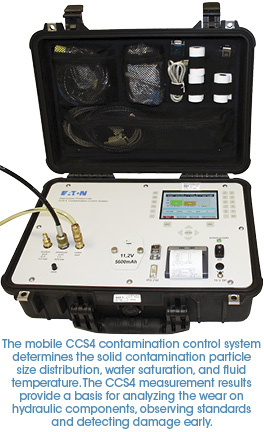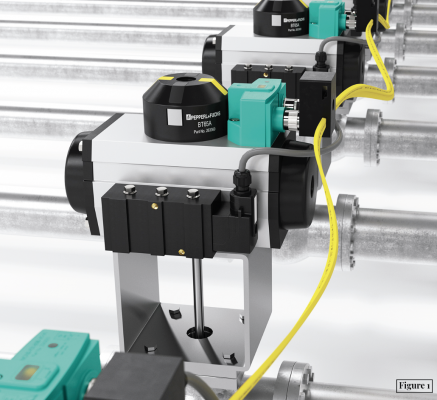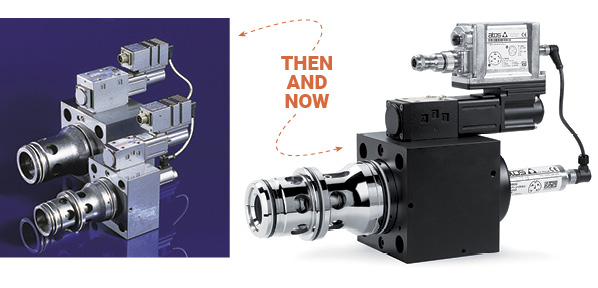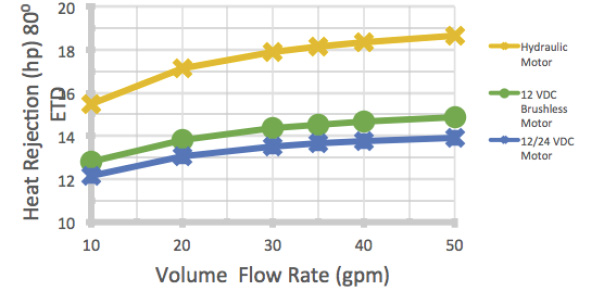Contamination Control System Does the Dirty Work
 Eaton’s condition-monitoring system helps industrial vacuum truck manufacturer determine the condition of hydraulic oil and sources of contamination to improve product performance.
Eaton’s condition-monitoring system helps industrial vacuum truck manufacturer determine the condition of hydraulic oil and sources of contamination to improve product performance.
Background
Dirty hydraulic fluid is the root cause of up to 80% of all hydraulic system problems. If hydraulic oil is contaminated, there are a number of potentially detrimental effects that can diminish performance or damage system components.
Potential ramifications include surface corrosion and accelerated fatigue of metal components. Another effect is distinct changes in the physical characteristics of the oil itself, resulting in hydraulic oil that has a different viscosity or compressibility, which can adversely affect the ability of the oil to transfer power.
Since 1986, Vac-Con, Inc. has manufactured more than 7,000 custom-built, truck-mounted machines to serve the public and private environmental markets worldwide. It now employs nearly 300 people at its single location in Green Cove Springs, Fla.
For more than 25 years, Vac-Con has been manufacturing industrial vacuum trucks and loaders without noticing any issues related to hydraulic oil contamination. But a clear spike in warranty costs and the desire to continually improve product performance and customer satisfaction sparked a comprehensive analysis of its entire operation.
The company enlisted the help of Eaton distributor Hydraulic Supply of Sunrise, Fla. to assist with the evaluation, which included an in-depth look at assembly procedures and the quality of the hydraulic oil being used in its new trucks. The goal was to minimize any water or other contaminants from entering its trucks’ hydraulic systems.
Challenge
“After an exhaustive analysis of our entire process, we discovered some areas where we could improve,” said Tom Armstrong, senior engineer at Vac-Con. “We made many changes in the assembly areas and changed procedures to ensure that the oil coming in from our supplier met our cleanliness standards and the oil going directly into the trucks was free of contamination,” added Bill Barnes, Vac-Con’s lean facilitator and process improvement manager.
Once the revamped process was in place, the company began looking for a method to regularly and reliably test the oil to measure the success of the new procedures. It also wanted the capability to keep a record of the readings for warranty purposes.
Knowing particle size distribution of any contamination, water saturation, and temperature enables the company to evaluate the precise condition of the system and to determine if procedural changes were working. This information helps to promptly initiate actions and cost-saving measures before any failures can occur.
Solution
Hydraulic Supply recommended Eaton’s CCS4 contamination control system and a BSS2 bottle-sampling system for the task. The aim of the systems is to provide a reliable, real-time snapshot used to determine hydraulic fluid condition in the field. Users have access to simultaneous instant readings of particulate contamination and fluid aging with a single measurement using calibrated in-line sensors.
The ability to monitor hydraulic fluids in real time makes it possible to immediately diagnose component and seal wear, as well as provide a measurable basis for filter and fluid change intervals. The ease and simplicity of the testing procedure makes it possible to test the condition of new fluids as they are introduced into a system to verify the effectiveness of offline filtration systems, as well as the correct storage and transport of the fluids.
The difference between knowing the condition of new fluids and waiting for a time-consuming laboratory analysis could be the difference between an efficient, reliable system and an early failure.
“This tool gives us a rapid assessment of our efforts without having to wait four or five days for results to come back from a lab,” said Armstrong. “It’s a mobile unit that allows us to hook it directly into the truck to test the oil in a closed atmosphere. It’s so easy to use that anyone could come in and follow the directions, even if they had never seen it before.”
While this portable testing system can duplicate much of the analytical capability offered by traditional lab-based services, it does not eliminate the need for periodic laboratory tests. It simply changes the frequency with which they are required and the nature of the tests performed. For example, when particle counts begin to increase, operators will initiate sending samples to the lab to identify contaminants and resolve these issues early on.
Results
The industrial vacuum trucks represent a significant investment for the company, costing from $150,000 to $400,000 each, so eliminating or managing any hydraulic oil contamination is vital.
The customer was so impressed with initial testing of the BSS2 that it constructed a new building where it could use the Eaton equipment to test every vehicle’s hydraulic fluid prior to delivery to its customers. The company did not test trucks for hydraulic oil contamination under its past procedures.
Since installation, the company has tested more than 650 trucks, and preliminary results show that the suspected issue with water contamination was isolated.
“The whole process has required a lot of work, but it has been worth it,” commented both Barnes and Armstrong. “Since we began testing, we have not had to replace a single valve or pump in our assemblies. We also have not had a single failure in the field, and our warranty costs have dropped significantly. This tool allowed us to sustain our improved procedures and ensure that the oil going into our trucks is pure when it leaves our facility. And that ultimately benefits our customers.”







